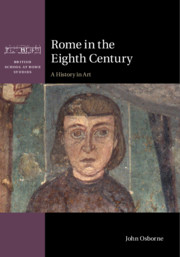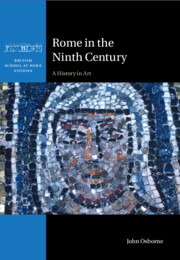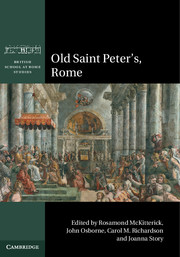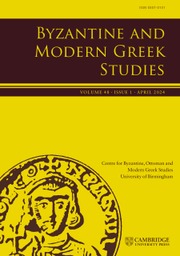Rome in the Eighth Century
A History in Art
$120.00 (C)
Part of British School at Rome Studies
- Author: John Osborne, Carleton University, Ottawa
- Date Published: August 2020
- availability: Available
- format: Hardback
- isbn: 9781108834582
$
120.00
(C)
Hardback
Other available formats:
eBook
Looking for an examination copy?
This title is not currently available for examination. However, if you are interested in the title for your course we can consider offering an examination copy. To register your interest please contact [email protected] providing details of the course you are teaching.
-
This book addresses a critical era in the history of the city of Rome, the eighth century CE. This was the moment when the bishops of Rome assumed political and administrative responsibility for the city's infrastructure and the physical welfare of its inhabitants, in the process creating the papal state that still survives today. John Osborne approaches this using the primary lens of 'material culture' (buildings and their decorations, both surviving and known from documents and/or archaeology), while at the same time incorporating extensive information drawn from written sources. Whereas written texts are comparatively few in number, recent decades have witnessed an explosion in new archaeological discoveries and excavations, and these provide a much fuller picture of cultural life in the city. This methodological approach of using buildings and objects as historical documents is embodied in the phrase 'history in art'.
Read more- Adopts a multi-disciplinary approach to the history of the city of Rome in the early Middle Ages, with a primary focus on 'material culture'
- Demonstrates the persistence of Mediterranean culture in Rome even after the political ties with Constantinople had been broken
- Utilizes numerous 'case studies' of individual monuments, which are treated as historical documents
Reviews & endorsements
‘The new volume is an enterprising, wide-ranging synthesis unlike anything the author has attempted before … It is a panoramic résumé of Rome’s cultural and institutional evolution over the course of the eighth century, that pivotal period when the city passed from imperial to papal control, presented through the lens of ‘art.’’ Hendrik Dey, Bryn Mawr Classical Review
See more reviews‘The value of the book is in the synthesis of existing scholarship from a novel vantage point.’ Caroline Goodson, Speculum: A Journal of Medieval Studies
Customer reviews
Not yet reviewed
Be the first to review
Review was not posted due to profanity
×Product details
- Date Published: August 2020
- format: Hardback
- isbn: 9781108834582
- length: 312 pages
- dimensions: 253 x 182 x 20 mm
- weight: 0.79kg
- contains: 52 b/w illus. 10 colour illus.
- availability: Available
Table of Contents
1. Rome in 700: 'Constantinople on the Tiber'
2. John VII servus sanctae Mariae
3. Clerics, monks, and saints
4. 'The City of the Church'
5. The Chapel of Theodotus in Santa Maria Antiqua
6. Pope Zacharias and the Lateran Palace
7. Rome and the Franks
8. Paul I
9. Hadrian I dux Dei
10. Leo III and Charlemagne
Afterword
Sorry, this resource is locked
Please register or sign in to request access. If you are having problems accessing these resources please email [email protected]
Register Sign in» Proceed
You are now leaving the Cambridge University Press website. Your eBook purchase and download will be completed by our partner www.ebooks.com. Please see the permission section of the www.ebooks.com catalogue page for details of the print & copy limits on our eBooks.
Continue ×Are you sure you want to delete your account?
This cannot be undone.
Thank you for your feedback which will help us improve our service.
If you requested a response, we will make sure to get back to you shortly.
×




.jpg)
.jpg)
